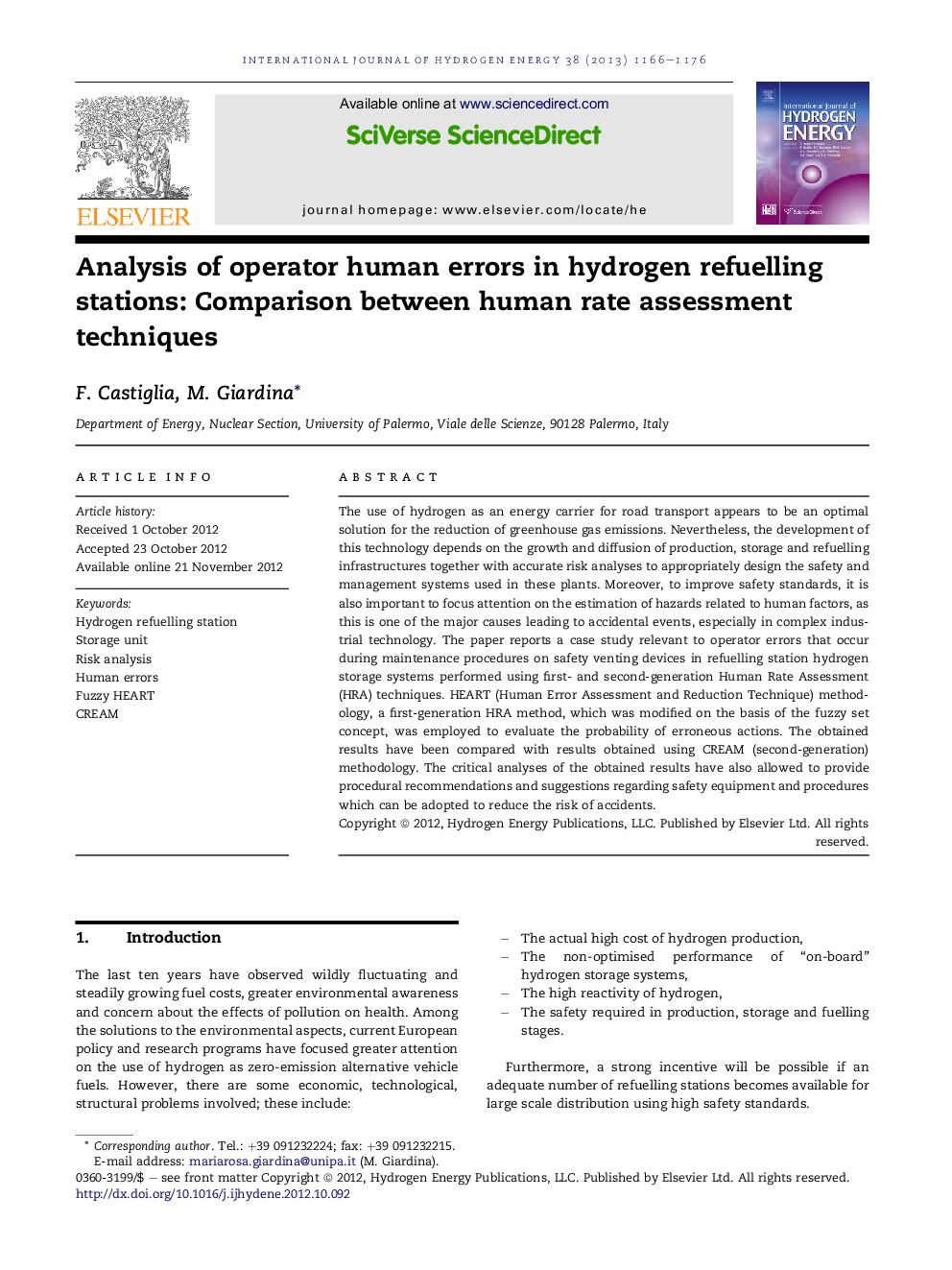| Article ID | Journal | Published Year | Pages | File Type |
|---|---|---|---|---|
| 1282083 | International Journal of Hydrogen Energy | 2013 | 11 Pages |
The use of hydrogen as an energy carrier for road transport appears to be an optimal solution for the reduction of greenhouse gas emissions. Nevertheless, the development of this technology depends on the growth and diffusion of production, storage and refuelling infrastructures together with accurate risk analyses to appropriately design the safety and management systems used in these plants. Moreover, to improve safety standards, it is also important to focus attention on the estimation of hazards related to human factors, as this is one of the major causes leading to accidental events, especially in complex industrial technology. The paper reports a case study relevant to operator errors that occur during maintenance procedures on safety venting devices in refuelling station hydrogen storage systems performed using first- and second-generation Human Rate Assessment (HRA) techniques. HEART (Human Error Assessment and Reduction Technique) methodology, a first-generation HRA method, which was modified on the basis of the fuzzy set concept, was employed to evaluate the probability of erroneous actions. The obtained results have been compared with results obtained using CREAM (second-generation) methodology. The critical analyses of the obtained results have also allowed to provide procedural recommendations and suggestions regarding safety equipment and procedures which can be adopted to reduce the risk of accidents.
► Maintenance procedures in a hydrogen refuelling station are considered. ► Estimation of hazards related to human factors has been performed. ► Human error probability has been assessed by using fuzzy HEART technique. ► Procedural recommendations to reduce the risk of accidents are provided.
